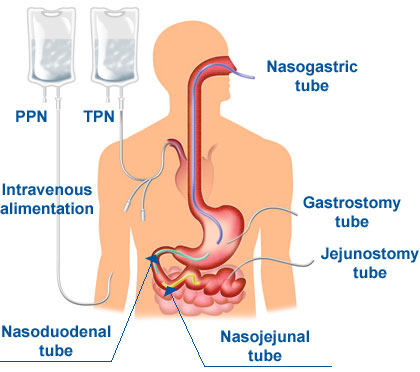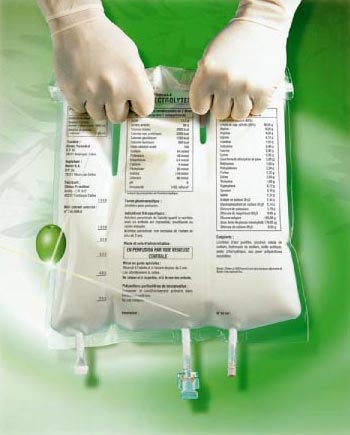People who are very ill, injured, or recovering from surgery, especially gastrointestinal surgery, may not be able to tolerate food in the digestive tract. For these people, nourishment is delivered directly into the bloodstream through a large catheter (tube) inserted into a large vein near the heart. This method of nutrient delivery is called total parenteral nutrition (TPN) or hyperalimentation.
Parenteral means “by some way other than through the digestive tract.” And hyperalimentation means “above (hyper) the alimentary (or digestive) tract.” So you can see that both terms refer to a method of feeding that does not involve the digestive tract. As you will recall from the beginning of the chapter, the digestive tract breaks food down into nutrients, and then these nutrients are absorbed into the bloodstream. If a person is receiving TPN, then the nutrients must be delivered to the bloodstream in their smallest form, because digestion does not occur. Water, glucose, vitamins, and minerals are small molecules. But proteins and fats are bigger. This is why a large catheter is used for TPN, instead of an IV line. The large catheter used for TPN is wider and allows the bigger fat and protein molecules to pass through. An IV line is smaller and only allows smaller molecules, such as water, glucose, vitamins, minerals, and medications to pass. The ability to administer fats and proteins, as well as the other four classes of nutrients, is where the “total” comes from in the term total parenteral
nutrition.

